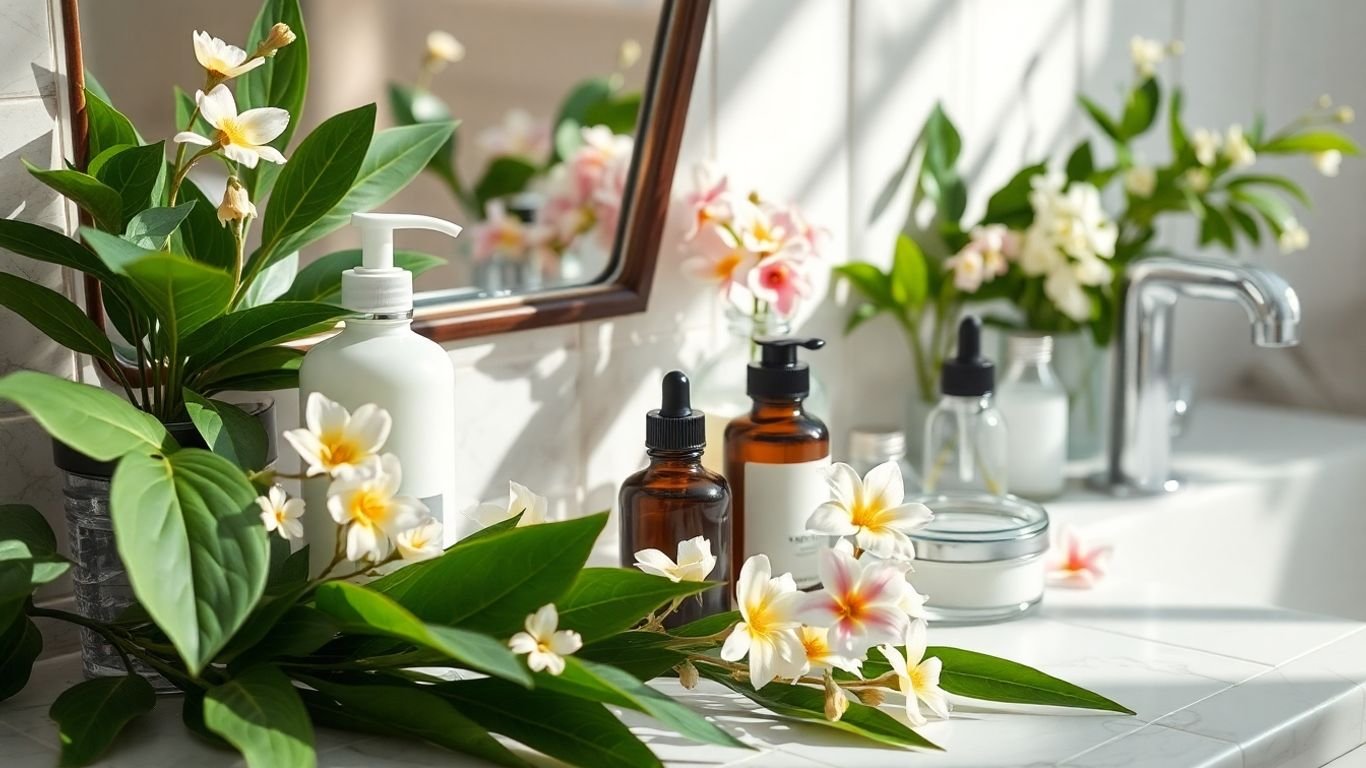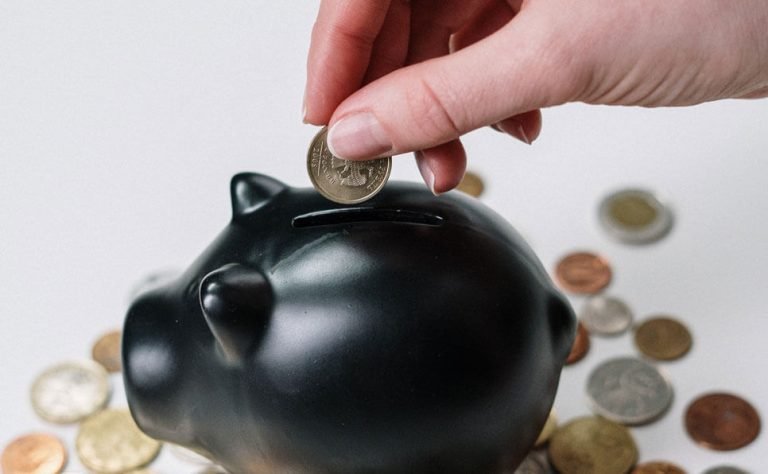Ultimate Guide to Building an Eco-Friendly Skin Care Routine

Getting your skin to look and feel its best doesn’t have to mean harming the planet. It’s actually pretty easy to switch to an Eco-Friendly Skin Care routine. Many of us are already doing bits and pieces without even realizing it. The big cosmetics industry churns out tons of packaging every year, which isn’t great. But we can make better choices. This guide is all about simple steps to make your beauty habits kinder to the Earth, without sacrificing healthy, glowing skin.
We’ll look at what makes a brand eco-friendly, how to pick the right products, smart packaging, and even how what you eat can help your skin. Let’s get started on building a routine you can feel good about. If you’re curious about where to start, Mixed Nature’s Eco-Friendly Skin Care guide
Key Takeaways
When choosing products, look for natural and organic ingredients, and consider extracts from marine life. Always try to avoid things like microplastics and petroleum byproducts.
Packaging is a big deal. Try to pick items that use recyclable or biodegradable materials, and cut down on plastic whenever possible.
Simplify your routine by using fewer products. Multi-purpose items, like a soap bar that works for both hair and body, can really help reduce waste.
Think about your beauty tools too. Swapping disposable items for reusable ones, like washable pads instead of cotton balls, makes a difference.
Healthy skin starts from within. Drinking enough water and eating foods rich in antioxidants can significantly improve your skin’s appearance and health.
Understanding Eco-Friendly Skin Care Principles
Making the switch to an eco-friendly skincare routine isn’t just a trend; it’s about being more mindful of our planet. The beauty industry, as big as it is, has a pretty significant environmental footprint, especially when it comes to packaging. Think about it: billions of units of packaging are produced every year, and a lot of that ends up as waste.
Choosing products that are kind to the earth is a way we can all contribute to a healthier planet. It might seem like a small change, but when many people make these choices, the impact adds up. This section will help you get a handle on what makes skincare truly sustainable and how to spot products that align with those values.
Defining Sustainable Brands and Products
When we talk about sustainable brands and products, it’s not just one thing. It’s a whole picture that includes everything from where the ingredients come from, how the product is made, the packaging it comes in, how it gets to you, and what happens after you’re done with it. Brands that are serious about sustainability look at all these steps. They’re thinking about using ingredients that are grown responsibly, minimizing waste during production, and using packaging that doesn’t harm the environment. It’s a big commitment, and it means they’re trying to be good stewards of the planet throughout their entire business.
The Environmental Impact of the Cosmetics Industry
The cosmetics industry has a noticeable impact on the environment. A big part of this comes from the sheer volume of products and packaging. Billions of cosmetic items are sold annually, and a huge amount of that involves plastic packaging, which can take hundreds of years to break down. Beyond packaging, there are concerns about ingredient sourcing, water usage in manufacturing, and the chemicals that can end up in our waterways. It’s a complex issue, but understanding these impacts is the first step toward making better choices.
The cosmetics industry generates a massive amount of waste, particularly from single-use packaging. This waste contributes significantly to landfill burden and pollution, impacting ecosystems and wildlife. Conscious consumer choices can help drive demand for more responsible practices.
Navigating Green, Clean, Organic, and Vegan Labels
Walking down the skincare aisle can be confusing with all the different labels out there. “Green,” “clean,” “organic,” and “vegan” all sound good, but they don’t always mean the same thing, and they don’t always guarantee eco-friendliness. “Organic” usually refers to ingredients grown without synthetic pesticides or fertilizers. “Vegan” means no animal products or by-products were used. “Clean” is a bit more subjective and often means avoiding certain synthetic ingredients.
“Green” is a broad term that can encompass many eco-friendly aspects. It’s important to look beyond just the label and research what a brand means by these terms and what their overall sustainability practices are. Sometimes, a product might be vegan but still come in excessive plastic packaging, or organic but use water-intensive farming methods. It’s about looking at the whole picture.
Here’s a quick breakdown:
Organic: Focuses on how ingredients are grown (no synthetic pesticides/fertilizers).
Vegan: Ensures no animal-derived ingredients or testing on animals.
Clean: Generally means avoiding specific synthetic chemicals, but definitions vary.
Green: A broad term often used to describe environmentally friendly practices, but can be vague.
It’s always a good idea to check a brand’s website or look for third-party certifications to get a clearer picture of their commitment to sustainability.
Choosing Conscious Skincare Products
When you’re trying to be more eco-friendly with your skincare, the first big step is looking at what’s actually in the bottles and jars. It’s not just about what the brand says on the front; you’ve got to be a bit of a detective. The ingredients list tells a much bigger story about a product’s true impact.
Prioritizing Natural and Organic Ingredients
This is where things get really interesting. Natural ingredients are often plant-derived, meaning they come from things like flowers, fruits, and roots. Organic takes it a step further – these ingredients are grown without synthetic pesticides or fertilizers. Why does this matter for the planet? Well, organic farming practices are generally better for soil health and biodiversity. Plus, when you use products with natural ingredients, you’re often avoiding synthetic chemicals that can be harsh on your skin and potentially end up in waterways.
Think about ingredients like shea butter, jojoba oil, aloe vera, and rosehip oil. These are powerhouses for your skin and are readily available from nature. Many brands are now highlighting their commitment to sourcing these ingredients responsibly, which is a good sign.
Avoiding Harmful Ingredients Like Microplastics
This is a big one, and honestly, a bit scary when you think about it. Microplastics are tiny pieces of plastic that can end up in our skincare products. They’re often used as exfoliants or thickeners. The problem is, when you wash these products off, those microplastics go down the drain and can end up in our oceans, harming marine life. They’re also incredibly hard to filter out.
Beyond microplastics, there are other ingredients to watch out for. Things like parabens, sulfates (like SLS and SLES), and phthalates are often flagged for potential environmental and health concerns. While the science is complex, many people choose to avoid them to be on the safe side. Reading labels and looking for products that are free from these can make a difference.
Exploring Marine and Algae-Based Extracts
This is a really cool area of eco-friendly skincare. Marine and algae-based ingredients are becoming super popular, and for good reason. Algae, for example, grows quickly and can be cultivated in ways that have a relatively low environmental footprint. Some types of algae are packed with antioxidants, vitamins, and minerals that are fantastic for skin hydration and protection.
These ingredients can offer benefits similar to traditional ones but come from a renewable source. Think about ingredients like spirulina, chlorella, or sea kelp. They’re being used in everything from serums to masks, offering a potent dose of nutrients straight from the ocean. It’s a smart way to get effective skincare while tapping into a sustainable resource.
Sustainable Packaging Solutions
The packaging for our skincare products is a big deal when we’re trying to be more eco-conscious. Honestly, it’s kind of shocking how much waste the beauty industry creates. Think about it – all those little jars, tubes, and boxes. We need to pay more attention to what our products come in. It’s not just about the product itself, but how it gets to us and what happens to the container afterward.
The Importance of Mindful Packaging Choices
When you’re picking out skincare, take a moment to look at the packaging. Is it made of materials that can be used again or that will break down naturally? Many brands are starting to get this, which is good news. They’re moving away from single-use plastics and finding smarter ways to package their goods. It makes a difference, even if it feels like a small step.
Opting for Recyclable and Biodegradable Materials
So, what should we be looking for? Glass is a great option because it can be recycled endlessly. Aluminum is another good one. Some brands are even using paper or cardboard that’s been responsibly sourced. And then there are materials that are designed to break down over time, like certain bioplastics or compostable packaging. It’s all about choosing things that don’t just end up in a landfill for hundreds of years.
Here’s a quick rundown of what to look for:
Glass: Infinitely recyclable, good for serums and creams.
Aluminum: Lightweight and recyclable, often used for lotions or balms.
Recycled Paper/Cardboard: Look for certifications like FSC to ensure it’s from sustainable forests.
Bioplastics/Compostable Materials: These break down, but check if you have access to commercial composting facilities.
Reducing Plastic Packaging Waste
Plastic is the big villain here. It’s everywhere, and it sticks around for ages. We can all try to cut down on it. This means choosing products that come in minimal plastic, or better yet, no plastic at all. Some companies are even offering refillable options, which is a fantastic way to keep using your favorite products without constantly buying new containers. It’s a win-win: you save money, and the planet gets a break.
It’s easy to get overwhelmed by all the choices, but focusing on reducing plastic and choosing materials that can be reused or recycled is a solid start. Think about the lifecycle of the packaging – from its creation to its end-of-life.
Some brands are really stepping up. For example, you might find companies that take back their empty containers for proper recycling or even offer discounts for returning them. It’s worth looking into what your favorite brands are doing in this area. Every little bit helps us move towards a more sustainable beauty routine.
Streamlining Your Eco-Friendly Skin Care Routine
It’s easy to get caught up in having a dozen different products for your face, but honestly, you probably don’t need all of them. Simplifying your approach to an organic skincare routine is not only better for the planet but often better for your skin too. Think about it: fewer products mean less packaging waste and less chance of irritation from too many active ingredients. The goal is to be effective without being excessive.
Simplifying Your Daily Regimen
When you’re trying to be more eco-conscious, a good place to start is by looking at your current routine. Do you really use that toner, serum, eye cream, and moisturizer every single day? Often, a simple cleanser, a good moisturizer, and sunscreen (if it’s daytime) are perfectly sufficient for healthy skin. Cutting back on steps means you’ll buy fewer products, which directly reduces waste. It’s about being intentional with what you put on your skin and what you bring into your home.
The Power of Multi-Purpose Products
Another smart way to cut down on consumption is to look for products that can do double duty. Instead of a separate brow pencil and eyeliner, maybe you can find one that works for both. Or, a creamy blush that can also be used on your lips. This reduces the number of items you need to buy and store, and again, less packaging. It’s a win-win for your wallet and the environment.
Incorporating Shampoo and Soap Bars
This is a big one for reducing plastic. Shampoo and conditioner bars are fantastic because they often come with minimal, compostable packaging. Plus, many of them can double as body wash, meaning you can replace multiple plastic bottles with just one or two bars. They last a surprisingly long time, too, making them a cost-effective and eco-friendly choice for your bathroom.
Making small swaps, like switching to solid bars for your hair and body, can have a surprisingly large impact on reducing plastic waste over time. It’s a simple change that aligns with a more sustainable lifestyle.
Eco-Conscious Beauty Tools and Habits
Making your beauty routine kinder to the planet doesn’t just stop at the products you buy. The tools you use and the habits you form play a big part too. It’s about thinking a little more about what you’re using and how you’re using it. Small changes in your daily routine can add up to a significant positive impact.
Switching to Reusable Beauty Tools
Think about all those cotton pads and disposable wipes. They create a lot of waste, even if they seem small. Swapping them out for washable, reusable versions is a super simple way to cut down on trash. You can find pads made from soft cotton or bamboo that are great for removing makeup or applying toner. Just toss them in the wash when you’re done!
Reusable Cotton Pads: Perfect for makeup removal and toning.
Washable Cleansing Cloths: Great for a gentle cleanse.
Microfiber Towels: Soft and effective for drying your face.
Choosing Sustainable Alternatives to Plastic Razors
Plastic razors are a big source of waste. They’re often not recyclable and end up in landfills. A much better option is a safety razor with a metal handle. You just replace the small metal blade when it gets dull, and those blades are usually recyclable. It might feel a bit different at first, but many people find they get a closer shave and it’s way better for the environment. Plus, they look pretty sleek in your bathroom!
Being Efficient and Reducing Product Waste
It’s easy to get a bit carried away and use more product than you actually need. Overusing things means you’ll run out faster and have to buy more, which means more packaging and more resources used. Try to stick to the recommended amounts on the product labels. If you’re using a serum, just a few drops are usually enough. For creams, a small dab will do. This not only helps with zero waste beauty tips but also saves you money in the long run. It’s a win-win!
Being mindful of how much product you dispense is a key part of a sustainable beauty routine. It’s not just about the ingredients or packaging, but also about using what you have wisely. This approach helps reduce overall consumption and waste, aligning with the principles of ethical cosmetic brands and sustainable beauty products.
Here are some ways to be more efficient:
Dispense Carefully: Use the pump or spatula as intended, avoiding excess.
Close Lids Tightly: Prevent products from drying out or spoiling prematurely.
Use Every Last Drop: Scrape out the bottom of jars or tubes when you’re nearing the end.
Nourishing Your Skin From Within

It might sound a bit cliché, but what you put into your body really does show up on your skin. Think of your skin as a big, beautiful billboard for your internal health. If you’re feeling run down or not getting the right nutrients, your complexion can often be the first to tell the story. So, before you even think about slathering on another cream, let’s talk about how to give your skin some love from the inside out. It’s all about making smart choices with your diet and staying properly hydrated.
Water is seriously important. Like, really important. It’s not just about quenching your thirst; it’s about keeping your skin cells plump and functioning well. When you’re dehydrated, your skin can look dull, feel tight, and fine lines might seem more noticeable. Staying hydrated helps maintain your skin’s elasticity and can even help it look a bit more ‘glowy’.
Aim for at least 8 glasses of water a day. More if you’re active or it’s hot out.
Herbal teas count too! Chamomile or peppermint can be nice.
Fruits and veggies with high water content, like cucumber and watermelon, are your friends.
Dietary Choices for Radiant Skin
What you eat directly impacts your skin’s health and appearance. Focusing on whole, unprocessed foods is a great starting point. Think colorful fruits and vegetables, lean proteins, and healthy fats. These provide the vitamins, minerals, and antioxidants your skin needs to repair itself and stay protected.
Making conscious food choices isn’t just about weight or energy levels; it’s a direct investment in your skin’s long-term health and appearance. Small, consistent changes can lead to noticeable improvements over time.
The Benefits of Antioxidant-Rich Foods
Antioxidants are like tiny bodyguards for your skin cells. They fight off damage from things like pollution and UV rays, which can speed up aging and cause dullness. Foods packed with antioxidants can help keep your skin looking younger and more vibrant.
Here are some top picks:
Berries: Blueberries, strawberries, raspberries – they’re loaded with vitamin C and other antioxidants.
Leafy Greens: Spinach, kale, and other dark leafy greens are packed with vitamins A, C, and E.
Nuts and Seeds: Almonds, walnuts, and sunflower seeds offer vitamin E and healthy fats.
Dark Chocolate: Yes, really! In moderation, dark chocolate with a high cocoa content is a good source of antioxidants.
Incorporating these foods into your daily meals and snacks is a simple yet powerful way to support your skin’s health from within. It’s about feeding your skin the good stuff it needs to thrive.
Key Natural Ingredients for Healthy Skin

When you’re trying to build an eco-friendly skincare routine, focusing on natural ingredients is a big step. These ingredients often come from plants and are packed with good stuff for your skin. They can help with everything from dryness to breakouts, and they’re usually gentler on the planet too. Let’s look at some of the stars in the world of natural ingredients for skin.
The Benefits of Almond and Avocado in Skincare
Almond is pretty amazing for skin. It’s full of antioxidants, vitamins, and minerals. Think of it like a little helper that keeps your skin smooth and hydrated. It’s even used for babies because it’s so gentle. Almond oil can help with skin tone and dryness, and it even offers some protection against sun damage. It’s a good one to look for if you’re thinking about anti-aging.
Avocado is another powerhouse. Eating it is good for you, and using avocado oil on your skin can make it more elastic and help with things like acne and dry patches. It’s great for soothing skin conditions too. You can even make a simple face mask with avocado, coconut oil, and honey for a healthy glow.
Harnessing the Power of Charcoal for Oily Skin
Charcoal has become really popular, and for good reason. It’s fantastic at pulling out impurities and can really help if you struggle with oily skin or acne. Charcoal works by absorbing toxins and excess oil, which can leave your skin feeling cleaner and looking less shiny. If you find your skin gets greasy easily, products with activated charcoal might be just what you need to get that clear, healthy look without the shine.
Exploring the Properties of Cocoa Butter
Cocoa butter is a rich emollient, meaning it’s really good at softening and soothing the skin. It’s made from cocoa beans and is packed with fatty acids and antioxidants. This makes it excellent for moisturizing dry skin and improving skin’s elasticity. It’s often used to help reduce the appearance of scars and stretch marks because of its hydrating properties. Plus, its natural scent is quite pleasant. It’s a wonderful ingredient for keeping skin feeling soft and supple, especially in drier climates or during winter months.
Wrapping It Up: Your Eco-Friendly Skin Journey
So, that’s pretty much it. Building a skincare routine that’s good for the planet doesn’t have to be some huge, complicated thing. It’s really about making small, smart choices. Think about what you’re buying, how it’s packaged, and if you can use less stuff overall. Even little changes, like switching to a shampoo bar or using reusable cotton pads, add up. Your skin will thank you, and so will the Earth. It’s not about being perfect, just about being more mindful. Keep experimenting, find what works for you, and enjoy having great skin while doing a little bit of good.
Frequently Asked Questions
What makes a skincare brand eco-friendly?
An eco-friendly brand thinks about the planet at every step. This includes where they get their ingredients, how they make their products, the materials they use for packaging, and how they ship things. They try to be good to the Earth from start to finish.
Why should I avoid certain ingredients like microplastics?
Some ingredients, like tiny plastic bits called microplastics, can be harmful to your body and the environment. They don’t break down easily and can end up in our oceans. Choosing products without these helps keep our planet cleaner and safer for everyone.
What’s the deal with ‘green,’ ‘clean,’ and ‘organic’ labels?
These labels can be a bit confusing! ‘Green’ usually means a product tries to be better for the environment. ‘Clean’ often means it’s made without certain chemicals. ‘Organic’ means the ingredients come from farming methods that avoid most synthetic pesticides and fertilizers. It’s good to check what these mean for each brand.
How can I make my packaging choices more sustainable?
Look for products that use packaging you can recycle or that breaks down naturally (biodegradable). Trying to cut down on plastic is a big help. Sometimes, brands offer products in glass, metal, or paper, which are often better choices than plastic.
Are there simple ways to make my skincare routine more eco-friendly?
Yes! You can use fewer products by choosing ones that do more than one thing, like a cleanser that also removes makeup. Also, consider switching to solid bars for shampoo and soap, as they often use less packaging and last longer.
Besides products, what else can I do for an eco-friendly routine?
You can swap out disposable items for reusable ones. For example, use washable cloths instead of cotton pads. Also, try not to waste product by using only what you need. Being mindful of how much you use really adds up to less waste over time.






